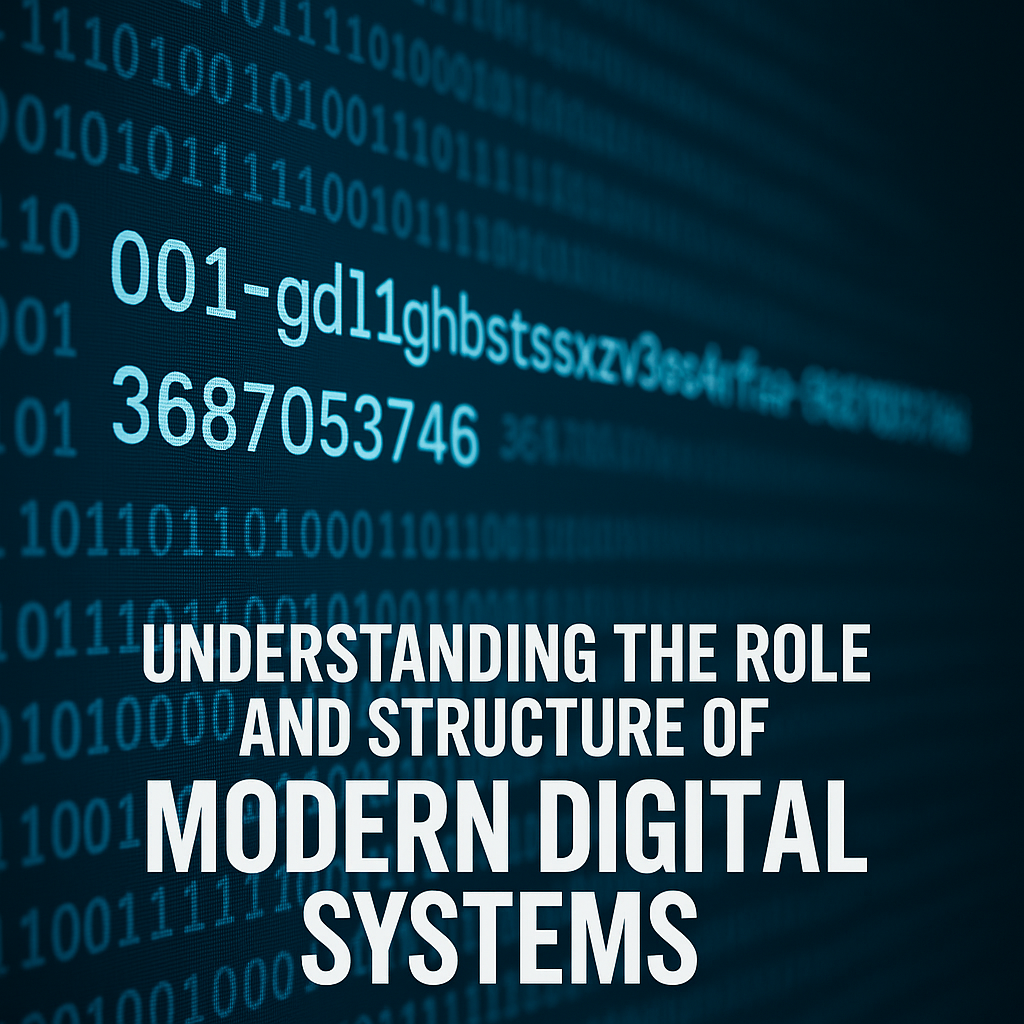In the vast realm of modern digital systems, data identification and retrieval play a fundamental role. At the heart of these processes are unique identifiers that serve as digital fingerprints for assets, users, processes, and events. One such identifier is 001-gdl1ghbstssxzv3os4rfaa-3687053746. Though seemingly cryptic, this string has the characteristics of a structured identifier used widely in databases, cloud systems, APIs, and secure tracking environments.
Identifiers like 001-gdl1ghbstssxzv3os4rfaa-3687053746 are typically system-generated and designed for precise, unambiguous reference. Their complexity ensures both uniqueness and resistance to unauthorized prediction or tampering.
What Is 001-gdl1ghbstssxzv3os4rfaa-3687053746?
The identifier 001-gdl1ghbstssxzv3os4rfaa-3687053746 can be broken down into three parts:
-
001: This may signify a version, batch number, region code, or primary group identifier.
-
gdl1ghbstssxzv3os4rfaa: This section is likely a randomized or encoded alphanumeric hash, commonly used to reference specific data objects or user sessions.
-
3687053746: A purely numeric component, often representing a timestamp, sequence number, or system reference index.
The combination of these parts allows the identifier to be used in large-scale systems where each element may serve a functional purpose—grouping, anonymizing, or time-stamping operations or data records.
Why Identifiers Like 001-gdl1ghbstssxzv3os4rfaa-3687053746 Matter
Unique identifiers are foundational to system integrity. They are essential in ensuring that every item in a system—whether a file, transaction, or user session—has a unique reference. This helps prevent duplication, streamlines search and retrieval, and maintains accountability in operations.
In distributed environments such as cloud computing platforms, microservices, and blockchain systems, identifiers like 001-gdl1ghbstssxzv3os4rfaa-3687053746 are mission-critical. They facilitate communication across services, enable logging and tracing, and play a crucial role in authentication and validation mechanisms.
Practical Applications of 001-gdl1ghbstssxzv3os4rfaa-3687053746
Such identifiers are used in various domains, including:
-
Database Management Systems (DBMS): Every record is assigned a unique identifier to allow quick indexing, retrieval, and relationship mapping.
-
Application Programming Interfaces (APIs): Identifiers like 001-gdl1ghbstssxzv3os4rfaa-3687053746 are passed in API requests to fetch, update, or delete specific data.
-
User Session Tracking: Web applications use similar identifiers to monitor user sessions, manage authentication, and track behavior patterns.
-
Secure Document Storage: Files uploaded to cloud services or digital repositories are often renamed using unique identifiers to mask original names and maintain anonymity.
-
Event Logging and Auditing: System events, errors, and performance logs are tagged with identifiers for precise root cause analysis and traceability.
Benefits of Structured Identifiers
There are several advantages to using a structured identifier like 001-gdl1ghbstssxzv3os4rfaa-3687053746:
-
Unambiguous Reference: Ensures that every reference points to one and only one entity in the system.
-
Scalability: Designed to support systems with billions of transactions or records.
-
Security and Obfuscation: Difficult to reverse-engineer, offering a layer of protection.
-
System Interoperability: Facilitates communication between distributed services and platforms.
-
Auditability: Enables complete tracking of activities, changes, and access history.
How to Handle Identifiers Like 001-gdl1ghbstssxzv3os4rfaa-3687053746
Working with such identifiers requires care and consistency. Here are a few best practices:
-
Avoid Manual Editing: Since these strings are often generated algorithmically, changing them manually can cause mismatches or errors.
-
Implement Validation Rules: Systems should check that identifiers conform to expected patterns before processing.
-
Secure Storage: If linked to user data or sensitive information, ensure identifiers are stored in encrypted databases.
-
Use in URLs or APIs: Always sanitize identifiers when using them in URLs or exposed endpoints to prevent injection attacks.
-
Track Lifecycle: Maintain a mapping system or log that traces where and how each identifier has been used.
Read also: Exploring the Strategic Potential of RWU UAR in Modern Education
Final Thoughts on 001-gdl1ghbstssxzv3os4rfaa-3687053746
While it may appear as an obscure code, 001-gdl1ghbstssxzv3os4rfaa-3687053746 is a perfect example of how digital systems maintain structure, precision, and traceability. Whether used in a development environment, an enterprise database, or a cloud infrastructure, such identifiers are central to maintaining operational integrity and enabling secure, scalable workflows.
Understanding how to read, generate, and work with these identifiers empowers developers, system architects, and analysts to design better, more reliable digital systems. As our digital footprint continues to grow, so will the importance of robust and intelligent identification frameworks like this.
